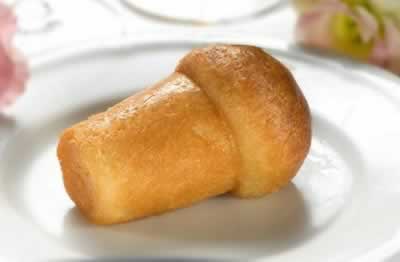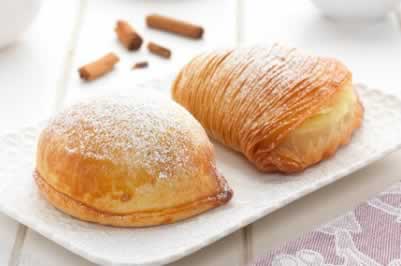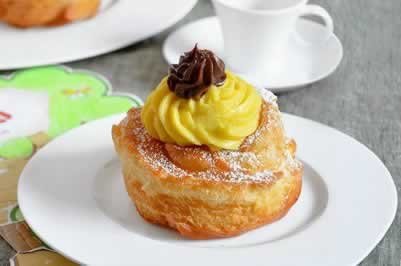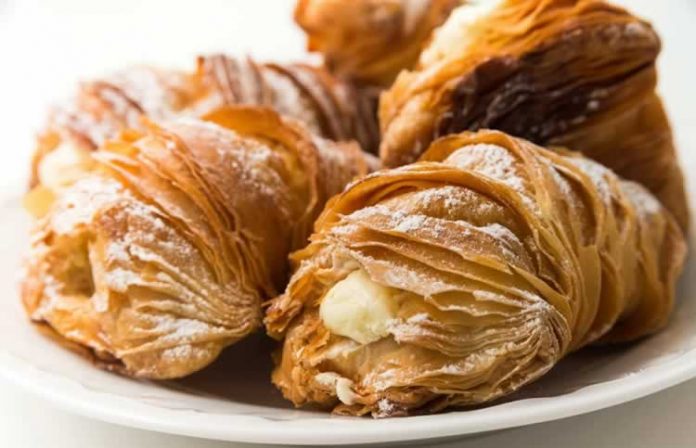Pastry in Naples Italy is not only a source of work, taste and income, but also an art, a vocation, a very important part of history and tradition. Every dessert, every cake, every variation in taste and fillings evokes memories, moments, parties, moments of life, combining past and present in a call of sight, smell and taste, as well as touch, all at once. In the alleys of the historic center there are many pastry shops and it is quite impossible to remain indifferent to the smell that reaches the streets. It is not at all unusual here to enter a building and be greeted by a single scent that combines babà, pastiere, zeppole or sfogliatelle.
You cannot visit Naples Italy without trying some of its most famous desserts:
Sfogliatella – In two variants curly or shortcrust pastry with ricotta, semolina, eggs and sugar enriched with candied fruit, spices and orange blossom water. It should be enjoyed hot perhaps accompanied by a good coffee.
Babà – King of Neapolitan pastry babà is one of the typical Neapolitan sweets, it is a mushroom-shaped dessert that amazes for its softness and its adorable and delicate rum dips. It seems to have been invented, more or less by mistake, by a bored Stanislao Leszczyński, king of Poland in exile.
Pastiera – Typical Easter dessert, but given its goodness it is eaten all year round. The pastiera was a base of shortcrust pastry with a soft heart filled with ricotta, orange flower water, boiled wheat, orange peel and spices.



Zeppole di San Giuseppe – They are generally prepared in the period of San Giuseppe – 19 March – so much so that they are a typical dessert for Father’s Day. The main ingredients are flour, sugar, eggs, butter and olive oil, custard, a sprinkling of powdered sugar and sour cherries in syrup for decoration. In the Neapolitan tradition there are two variants of fried and baked zeppole. Given their goodness, these are also eaten all year round.
